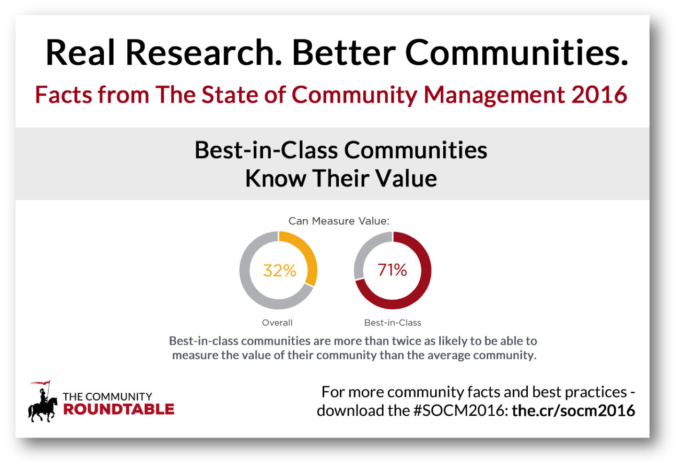By Ted McEnroe, Director of Research and Training
“Is it worth it?”
It’s a common question when making any investment – time, money, energy or brain power – in anything, whether it’s a movie, a meal at a new restaurant, a new exercise program, or anything else. We like to know whether what we are doing has value.
Often in communities, though, we shy away from defining the value of a community. This can be for a number of reasons. We can feel that defining value is too difficult, too hard to measure, or too limiting. That’s understandable – because the value of community can be multifaceted, and we don’t want to create a value definition that leaves out any valuable elements.
But deferring that process can slow the development of your community. In the State of Community Management 2016 survey we asked whether communities could define the value of community for members and for the organization, and whether they could define the shared value for members and the organization together. Then we asked whether the community could measure its value.
Three things emerged:
- About 40 percent of communities could not define the value of the community for members or for the organization, and 60 percent couldn’t define the shared value of the community.
- Communities that could define shared value scored more highly overall than their peers.
- And Best-in-Class communities, our Top 20% overall scorers, were more than twice as likely as their peers not only to be able to define value, but to measure it as well.

Being able to measure value is more than just a marketing need. It’s part of the strategic feedback loop that can improve communities. Defining value shouldn’t be seen as a box. It’s a tool that lets you target your resources for greatest benefit. Being able to measure that value – even imprecisely – gives you information you need to make changes and demonstrate progress.
As a community manager, you’re a driver of the community. Measuring the value of your community not only helps you make sure you’re headed in the right direction, it helps ensure your community members and your organization are on board for the ride.
We can’t wait to hear what you think – tag your thoughts with #SOCM2016 to join the conversation!
Are you a member of TheCR Network? Download the research inside the Network here.
